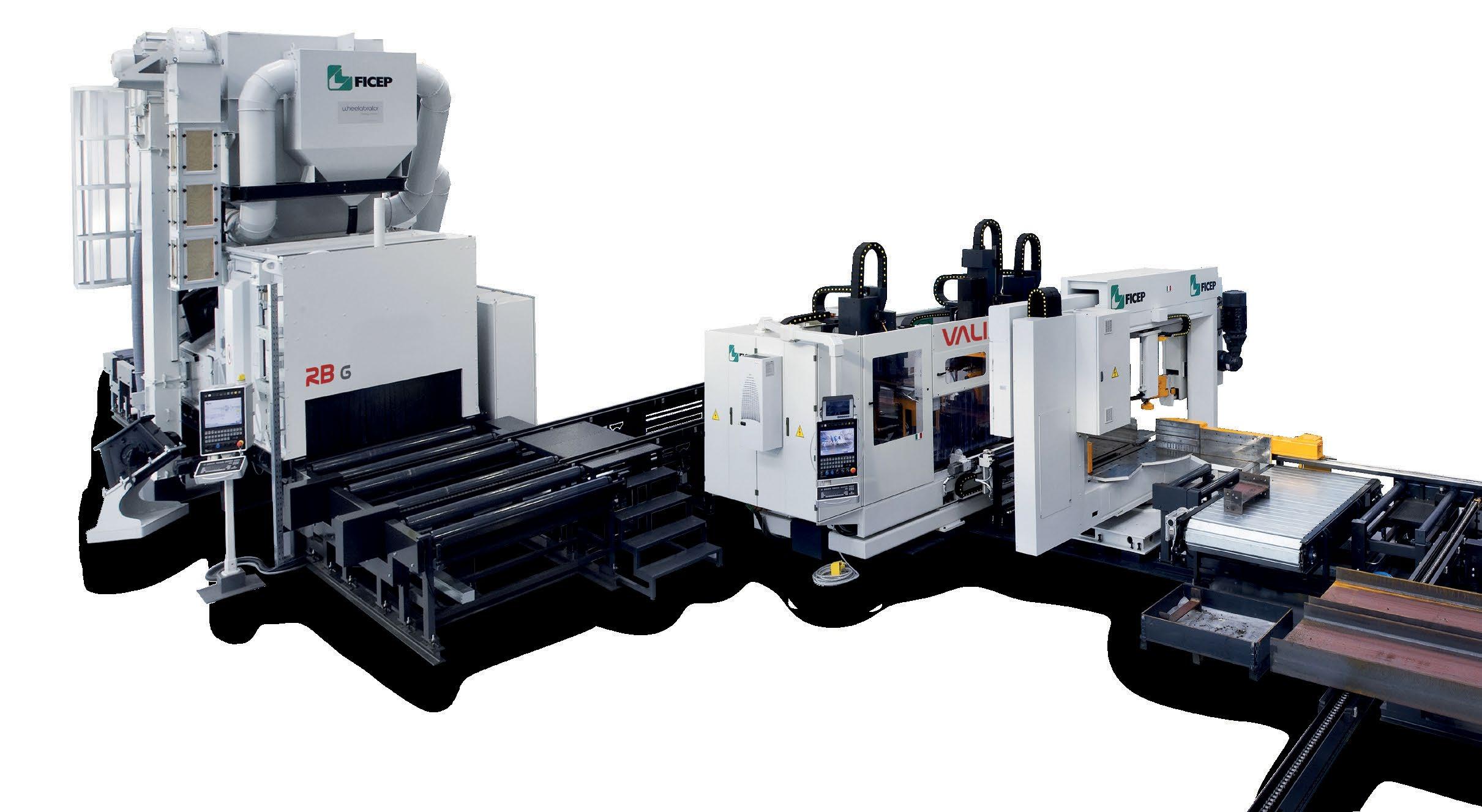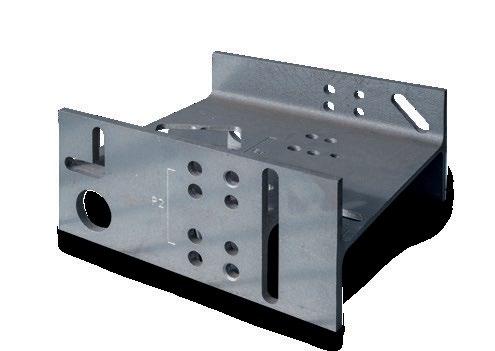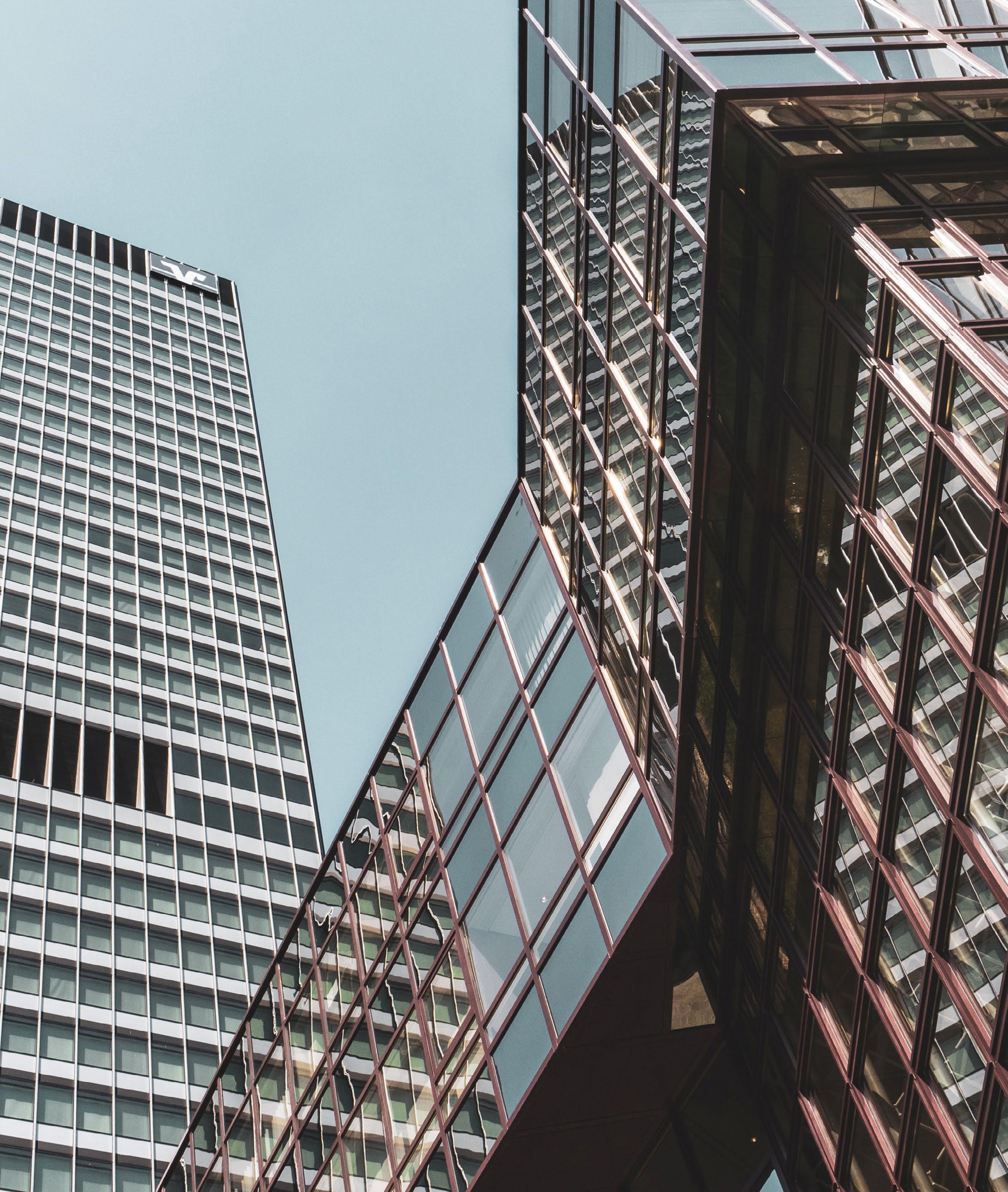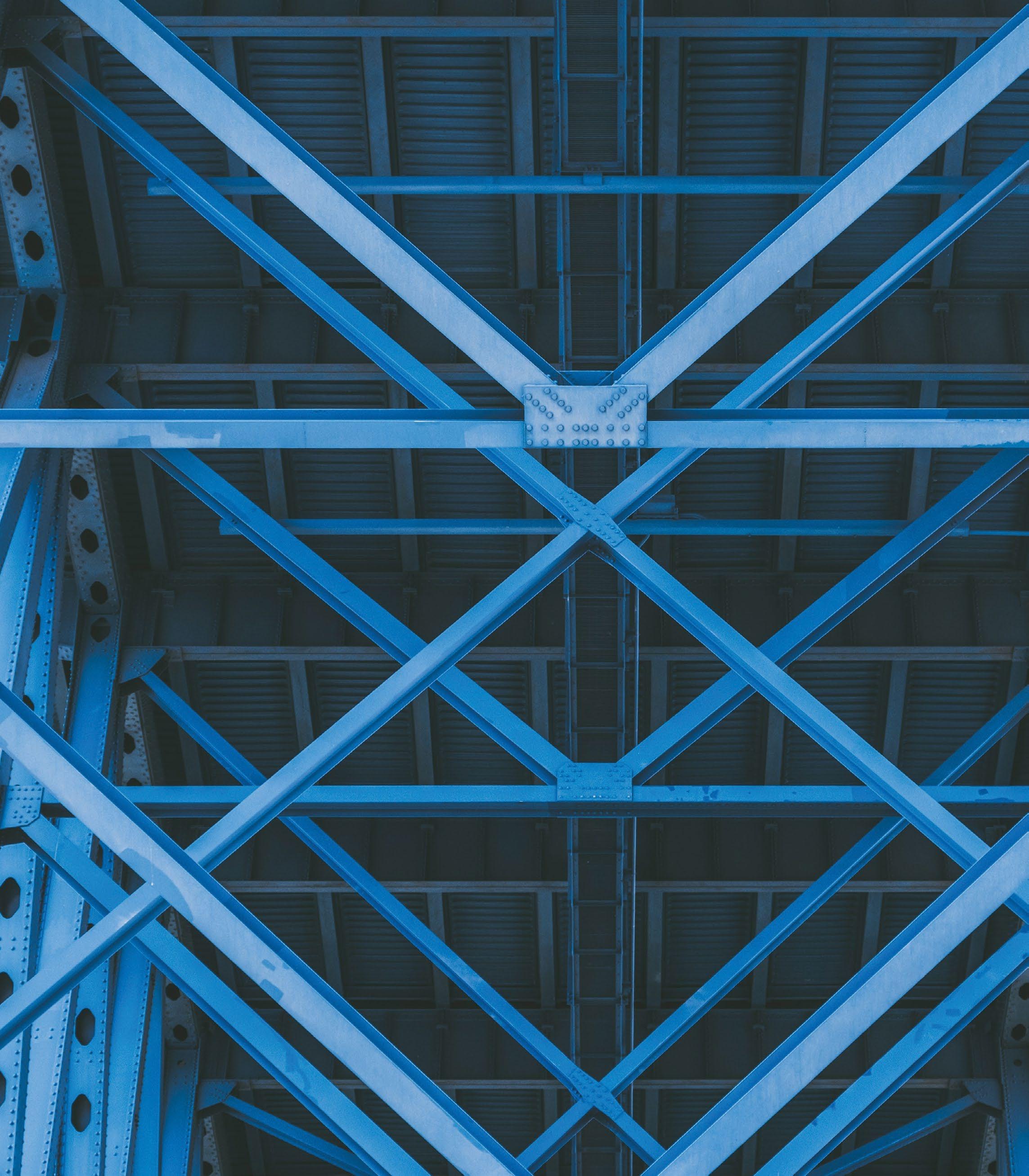
8 minute read
On the Beam
EACH QUARTER, THE AUSTRALIAN STEEL INSTITUTE BRINGS YOU NEWS AND VIEWS FROM AROUND THE STEEL INDUSTRY IN OUR REGULAR COLUMN: ON THE BEAM. FROM PROJECTS WON AND COMPLETED, THROUGH TO NEW PRODUCT LAUNCHES AND COMPANY ANNOUNCEMENTS, YOU CAN FIND IT ALL HERE.
WATKINS STEEL CELEBRATES THE OPENING OF A NEW FACTORY
Advertisement
Watkins Steel recently celebrated the official opening of their new factory at Raubers Road in Banyo, Queensland. Watkins Steel was established in 1968, with its first workshop located underneath a suburban house in Hendra. The company soon rented some smaller factories, before building its first factory in 1978 on Toombul Road in Virginia.
Every decade since then, Watkins Steel has progressed into larger facilities until the company's last move to Depot Street in 2008. 14 years later, Watkins Steel has officially expanded into its entire Raubers Road factory, taking their overall footprint from approximately 2,500m2 to 10,000m2 . This expansion is testament to the ongoing growth of the business and the incredible work of their employees across estimating, drafting, fabricating, installation, research and development, business services and Holovision.
Watkins Steel combines the latest 3D technology with advanced robotics to produce a variety of steel structures with unparalleled accuracy. Specialising in small structural steel, metalwork, urban artscapes, architectural structures, and refurbishment jobs, Watkins Steel's range of services also includes steel detailing and 3D laser scanning.
ASI SUBMISSION TO NSW GOVERNMENT’S FUTURE INNOVATION GREEN PAPER
ASI has made a submission to the NSW Government’s Securing future innovation and global competitiveness in NSW Green Paper. Consultation was sought on "on the forces driving substantial, rapid and ongoing change across the economy", to help the Government with industry policy reform in NSW over the next 10 to 15 years.
Key points in ASI's submission were: • Transition to net zero emissions by 2050 is the single biggest challenge and opportunity for the steel industry over the next 20 years. • All the major Australian steel producers have announced their intention to meet a net zero emissions by 2050 commitment, which is supported by comprehensive, published sustainability plans. • The single most critical business operating environment constraint is the availability of skilled personnel to fill industry wide vacancies. • We believe the single most effective means of encouraging local industry innovation and growth is for the NSW Government to set mandatory local participation targets for major projects.


AUSTRALIAN STEEL CONVENTION 9 – 11 OCTOBER 2022

REGISTRATION OPEN

The Australian Steel Convention 2022 brings together key industry leaders and innovators to discuss opportunities, showcase industry successes and examine what the future can and will look like.

Australian steel is vital to this country’s economy, stability, and growth. While the global stage is learning to adapt to an ever-changing landscape, Australia’s steel industry has an opportunity to thrive by delivering high-quality products through a robust and effective supply-chain. As billions of dollars are being invested in both civil infrastructure and domestic homebuilding, the opportunities for the steel sector are immense. From research to design, manufacturing, and fabrication, through to installation and construction, the future of Australian steel looks bright. Brighter still when consideration is given to the ever-growing dependence on steel across sectors and the burgeoning of a new era of endless innovative uses to propel Australia towards a new economy. In an everchanging global landscape, the Australian steel industry needs to be prepared to adapt to advancing technologies, sustainability, and environmental concerns and a rapidly changing economic outlook. As an industry, Australian steel has shown its ability to innovate and adapt. In today’s environment, these qualities have never been more important. Honest discussions, value for money propositions and the ability to think outside the steel box, will all be on display at this year’s convention.
BE SURE TO REGISTER FOR THE DEDICATED FABRICATORS FORUM
HONEST DISCUSSIONS
VALUE FOR MONEY PROPOSITIONS
OUTSIDE THE STEEL BOX THINKING

IMCRC ACTIVATE PROJECT TO DEVELOP CORROSION RESISTANT STEEL FENCING
The Innovative Manufacturing Cooperative Research Centre (IMCRC), together with leading Australian steel manufacturer, InfraBuild, and Australia’s national science agency CSIRO, have embarked on a collaborative research project to develop more corrosion resistant steel products.
The project, made possible with $100,000 funding through IMCRC’s activate program, will modernise InfraBuild’s finishing process by introducing CSIRO’s solid state, low-cost additive Cold Spray ZAP™ technology.
CSIRO’s cold spray technology works by applying a highstrength, recycled corrosion-resistant coating to steel that produces more damage and corrosion resistant products, particularly in soil. By employing the use of robotic coating application technology, InfraBuild and CSIRO will develop a fully automated digital manufacturing production line, improving productivity and increasing cost competitiveness.
Bradley Taylor, Director of Technical at InfraBuild Wire, said the IMCRC activate project is enabling InfraBuild to explore the technology as an alternative coating option, advance its manufacturing process and create new innovative steel products for a number of sectors.
“As part of IMCRC’s activate project, we aim to develop highvalue, cost-effective steel products that will deliver benefits to many sectors, from our primary producers and rural sectors to nation-building infrastructure. By integrating CSIRO’s Cold Spray ZAP™ technology in our manufacturing process, we will be able to manufacture longer-lasting, damage resistant, coated steel products that have the ability to withstand aggressive environments. Saving our customers money over the full life of each product,” he said.
CSIRO Research Director, Advanced Materials and Processing, Dr Kathie McGregor, recognised the important role that initiatives like IMCRC activate play in developing local industry capability and creating globally relevant commercial products. “CSIRO aims to accelerate sustainable manufacturing that is globally competitive, which we can achieve through collaboration with Australian industry. This project will help us develop our Cold Spray ZAP™ technology into a leading-edge, commercially viable and scalable solution to manufacture corrosion-resistant steel products in Australia,” she said.
Dr Matthew Young, IMCRC’s Manufacturing Innovation Manager, said IMCRC was delighted to be co-funding the development of an Australian manufactured innovative steel fencing that would address the national challenge of in soil steel corrosion.
“This research collaboration is enabling InfraBuild and CSIRO to solve a nationwide challenge, improving the sustainability of fencing in Australia under some of the toughest environmental conditions on earth. It’s an example of what can be achieved through investment in shorter-term collaborations between Australian manufacturing and research organisations that activate program has been specifically designed to address,” he said.
“The innovative coatings developed as part of this project, if successful, will significantly increase the life of selected InfraBuild steel products, cutting costs associated with production, installation and corrosion. IMCRC is pleased to be contributing to the development of a scalable steel product that has wide ranging applications and the potential to benefit many sectors in Australia and beyond,” Dr Young said.
WARM CHARGING DELIVERS ONE GREEN STAR POINT USING INFRABUILD MANUFACTURED REINFORCING PRODUCTS
Warm Charging involves minimising the time between billet being cast and entering the rolling stage of manufacturing various steel products, such as the reinforcing bar and mesh produced by InfraBuild’s EAFs at Laverton and Rooty Hill.
During rolling, the billet must be hot enough to be rolled into the final shapes. This is achieved by placing it in a gas-fired reheat furnace. At this stage, the billet may vary in temperature, which makes a difference to the time it needs in the furnace. When done consistently and effectively, Warm Charging can deliver significant savings in gas use and carbon emissions.
In an ideal Warm Charging process, hot billets are picked up and fed to the mill using crane tines (prongs); alternatively, warm billets are handled using a crane magnet. However, this presents several challenges, including having the right equipment to handle hot billets and coordinating the caster and mill production schedules so the same billet grade is being cast and rolled in the mill at the same time.
The team at the Laverton Rolling Mill tackled these challenges with a few modifications to the plant, including installing a crane lifting beam package to lift hot billets (controlled from inside the crane cabin), and modifying the bar and rod mill charge table to allow placement of hot billets without interfering with existing ones. Additionally, planning and scheduling is being addressed to align steel making and optimise opportunities using Warm Charging.
Since its introduction, Warm Charging has delivered increased energy savings and a tangible reduction in energy use. Warm Charging has also been in place for several years at the Sydney Bar Mill.
On the back of this initiative, a technical submission was put to the Green Building Council of Australia (GBCA) to recognise Warm Charging as a valid Energy Reducing Process (ERP) in Credit 20.1B of the Green Star ‘Design & As Built’ tool.
In March, the GBCA acknowledged that InfraBuild's Warm Charging technique qualified as a valid ERP, which will deliver one Green Star point from the use of reinforcing products made using InfraBuild manufactured steel.
The use of Warm Charging is in addition to the Polymer Injection Technique (PIT) which was recognised by the GBCA in 2014 as providing the same Green Star point. InfraBuild can now use PIT and Warm Charging to provide reinforcing bar and mesh products with one Green Star Point, as they occur at different stages of the steelmaking and rolling process
As part of the GBCA’s approval, InfraBuild needs to meet two conditions stated by the GBCA: undertaking a third-party review and compliance with recommendations from the review; and providing annual updates to help educate the wider industry on the benefits of Warm Charging.
The third-party review has already been undertaken by thinkstep-anz and independently verified by start2see, while the annual update (which will be publicly available) will be reflected in their annual ERP certificate on their website.
This initiative forms part of InfraBuild’s CN30 Objective, to be a low emission, carbon neutral steel maker by 2030. Their use of Warm Charging is a deliberate choice that they are making to help reduce their Scope 1 emissions, redefine steel as a green building material, and further assist their customers to improve the sustainability credentials of their projects.
This first appeared on the InfraBuild website: https://www.infrabuild.com/ourstories/warm-charging-project/











